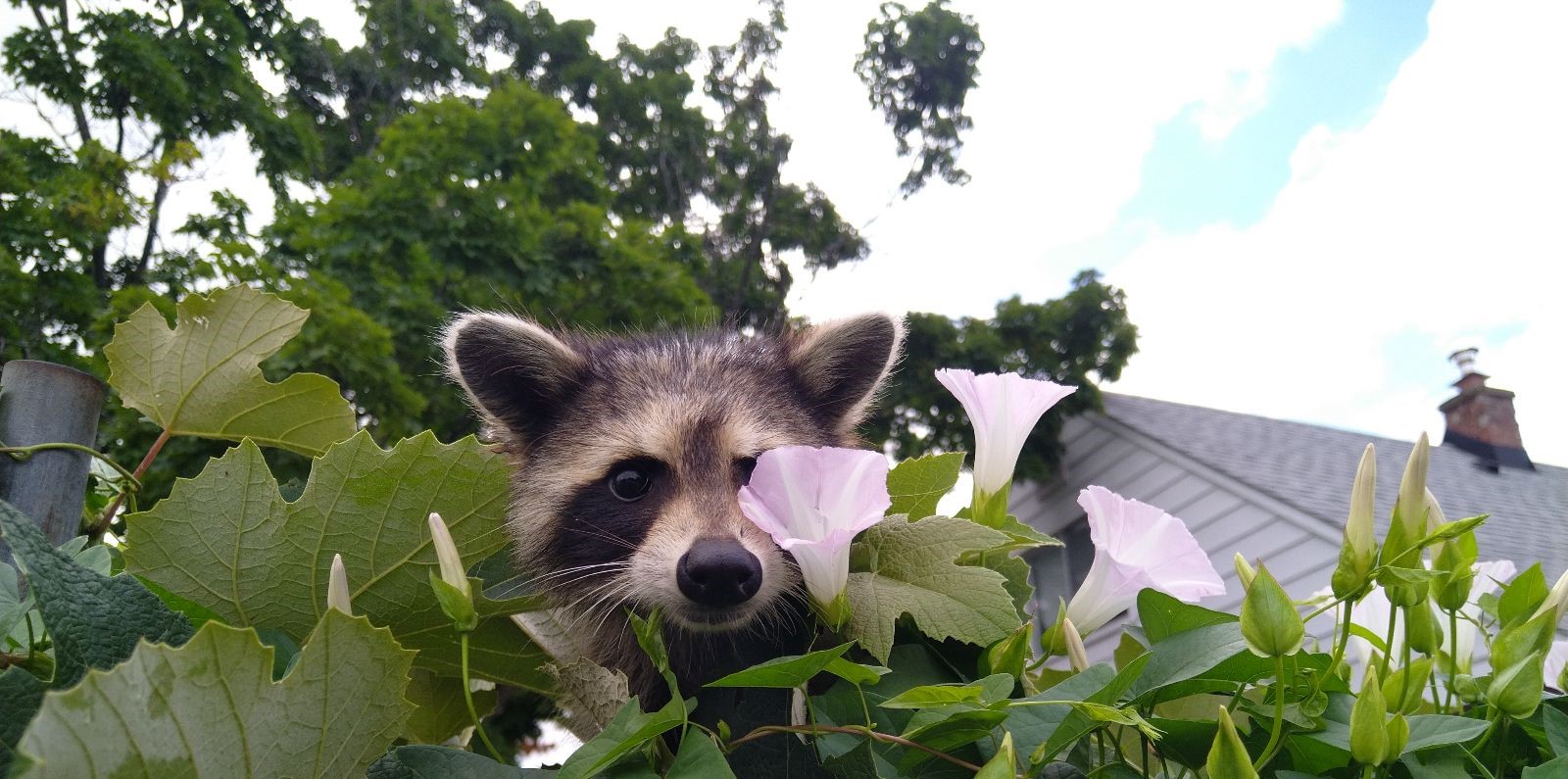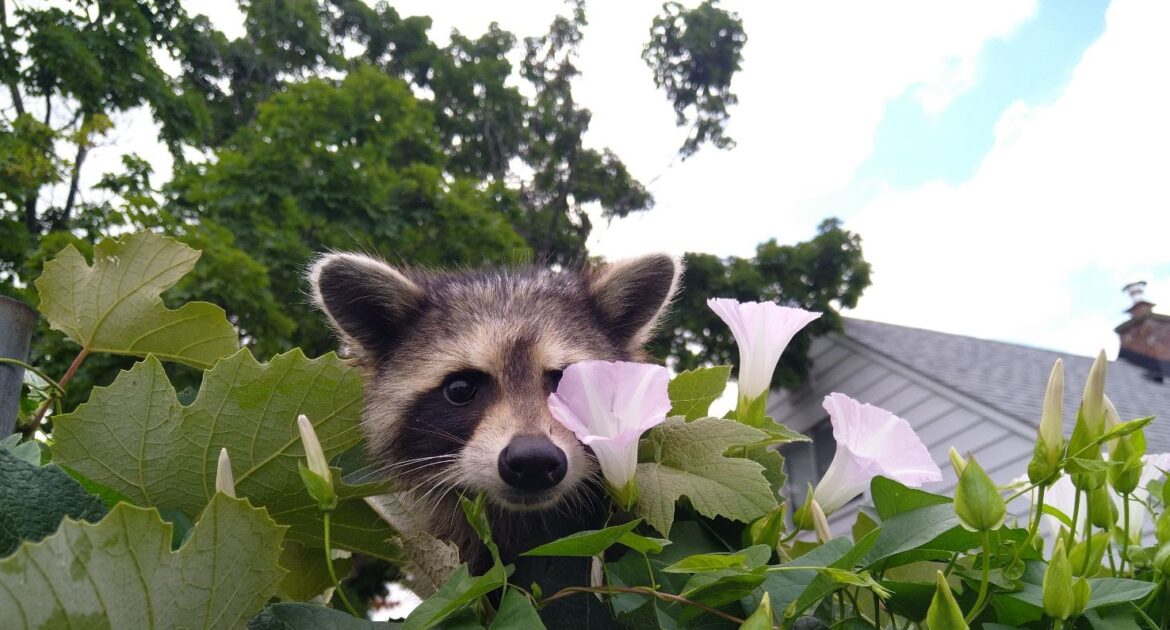Understanding the nuanced behaviours and communication tactics of raccoons is more than a matter of curiosity for homeowners; it is essential for cohabiting peacefully with these ubiquitous neighbourhood denizens. From their distinctive masked visages to their nimble fingers, raccoons convey a wide array of intentions and emotions through their body language and vocalizations. Recognizing these signs not only enriches our appreciation for these intelligent creatures but also empowers us to address raccoon-related challenges more sympathetically and effectively.
Need to know how to prevent raccoons? At the forefront of resolving human-wildlife conflicts with compassion and expertise stands Skedaddle Humane Wildlife Control. Their skilled team excels not just in the humane management of raccoon intrusions but also in addressing a spectrum of wildlife concerns – from how to get rid of birds to the delicate task of how to move a bird nest. This blog explores the fascinating world of raccoon communication and body language, unveiling our approach to fostering harmony between Niagara’s residents and their raccoon neighbours. Through understanding, we can transform potential conflicts into opportunities for coexistence, ensuring the welfare of all community members, both human and animal.
Raccoon Communication Methods
The elusive nature of raccoons makes them a rare daytime sight for homeowners. These adaptable creatures are characterized by intelligence, dexterity, and opportunistic feeding habits. Whether scavenging through trash or raiding garden produce, raccoons exhibit resourcefulness in their quest for food.
The cover provided by Niagara’s trees and bushes offers raccoons an ideal nesting and denning environment, particularly when human residences prove inviting. Understanding raccoons’ body language is crucial for peaceful coexistence among their peers and, at times, with humans.
Interpreting a raccoon’s posture and behaviour can reveal valuable information. For instance, a raccoon standing with an arched back and tail raised may indicate dominance, while one with a hind leg drawn toward the belly could be displaying caution or uncertainty. These subtle cues provide insights into the raccoon’s mood and the likelihood of interaction.
Raccoons communicate through a sophisticated language of vocalizations, gestures, and scent trails within their community. Exploring these communication methods offers captivating glimpses into their world and helps prevent unwelcome encounters.
Vocal Expressions
Raccoons articulate a variety of sounds, including chirps, growls, and screams, to convey their feelings and intentions. These sounds can indicate anything from happiness and contentedness to fear or aggression. Understanding these vocal cues enables us to gauge their emotional state and intentions, fostering a more harmonious existence.
Physical Gestures
Physical gestures among these creatures are highly expressive. From the assertive stance of a raccoon standing on its hind legs to signal dominance or curiosity to the submissive nature of a raccoon rolling onto its back, each posture tells a unique story. Observing these gestures can inform us about their mood and help us anticipate their next move.
Scent Trails
Raccoons also communicate through scent marking, using it to delineate territory or signal the presence of food. While less obvious to humans, recognizing the areas often visited or marked by raccoons can clue us into their paths and preferred habitats, assisting in the gentle steering of their activities away from human spaces.
Preventing Raccoon Conflicts
In navigating the challenges of sharing our spaces with these adept nocturnal visitors, effective strategies focus on eliminating attractants and securing our properties. Through thoughtful action and minor adjustments, we can discourage these creatures from seeing our homes as sources of sustenance or shelter without the need for direct communication or misunderstanding their body language. Here are some actionable tips:
- Secure Trash Bins: Ensure that all garbage cans have lockable lids to stop them from being raided. Consider investing in bins specifically designed to be tamper-proof against animals.
- Sound Deterrents: Use loud noises like radios or wind chimes to make the environment less appealing. These sounds can be particularly effective at deterring these animals but should not be so loud as to cause them physical
- Raccoon-proof Bird Feeders: Use feeders that close automatically under the weight of an animal larger than a bird, or place feeders far from trees and structures to make them less accessible.
- Remove Outdoor Food Sources: Keep pet food indoors and cover compost bins or use compost containers designed to be secure against animals.
- Close-Off Entry Points to Your Home: Regularly inspect and repair any breach in your home’s exterior that could serve as an entry point, including soffits, vents, and chimney openings.
- Install Motion-Activated Lights: Bright lights can startle these creatures and deter them from approaching your property.
In adopting these proactive measures, it’s possible to create a less appealing environment for nocturnal visitors, reducing the likelihood of their unwelcome presence. While our goal is not to disturb or harm, taking steps to protect our spaces helps to maintain a respectful and safe distance, enabling us to coexist peacefully. By adhering to these guidelines, we safeguard not only our homes but also the animals, steering clear of the need for intervention or removal.
Why DIY Raccoon Deterrence Could Backfire: Skedaddle’s Humane Solutions to the Rescue
Venturing into the realm of do-it-yourself measures for deterring these clever nocturnal visitors often leads to more problems than solutions. While the intention might be to safeguard our homes and gardens, the actions taken can inadvertently lead to distress or injury for both the individuals involved and the animals. This section explores the multiple facets of why engaging in such activities is not recommended and offers guidance toward more humane and effective strategies.
One of the primary concerns with DIY deterrence methods is the potential for physical harm. Attempting to trap or relocate them without professional expertise can result in injuries to both the person and the creature. Scratches, bites, and other injuries can occur, posing a risk of infection or disease transmission.
DIY methods often fail to address the root of the issue—attraction to readily available food or shelter. Without a comprehensive strategy, other visitors may soon replace the one who was removed. Additionally, incorrect or inhumane traps and deterrents can cause unnecessary suffering and may not be effective long-term.
Skedaddle offers expert assistance in handling raccoon problems on your property through their humane wildlife control solutions. With a team of trained professionals, they utilize a comprehensive approach to safely and effectively remove raccoons, ensuring minimal stress to the animals and no harm to your property. The process begins with a thorough inspection to identify raccoon entry points and nesting areas. Once located, Skedaddle’s team employs humane exclusion techniques, such as one-way doors, to encourage raccoons to leave on their own. Following the removal, they meticulously seal all potential entry points using durable materials to prevent re-entry. Additionally, Skedaddle provides clean-up and decontamination services to address any mess or health hazards left behind by raccoons. Their commitment to preventing future infestations includes educating property owners on wildlife behaviour and habitat modification strategies.
This comprehensive, customer-focused approach ensures not only the immediate resolution of raccoon issues but also long-term protection and peace of mind for property owners. Skedaddle’s reputation for excellence and custo
mer satisfaction makes it a trusted choice for humane wildlife control.
Trusting Professional Wildlife Technicians
When it comes to dealing with raccoon-related issues, a professional wildlife technician is your best ally. Their expertise in animal behaviour and safe removal methods is invaluable. We offer comprehensive services, from raccoon-proofing your home to safely and humanely removing raccoons that have made their way onto your property.
Encountering wildlife in your home or on your property can be unsettling, but it doesn’t have to be stressful. By understanding raccoon communication and body language, you empower yourself with the tools to handle situations with grace and wisdom. Remember, wild animals have as much right to existence as we do, and our goal should be to coexist harmoniously. Skedaddle Humane Wildlife Control is here to assist you in maintaining that harmony, so don’t hesitate to reach out to us for a quote and turn your wildlife removal in Niagara needs into a story of humane cohabitation.




